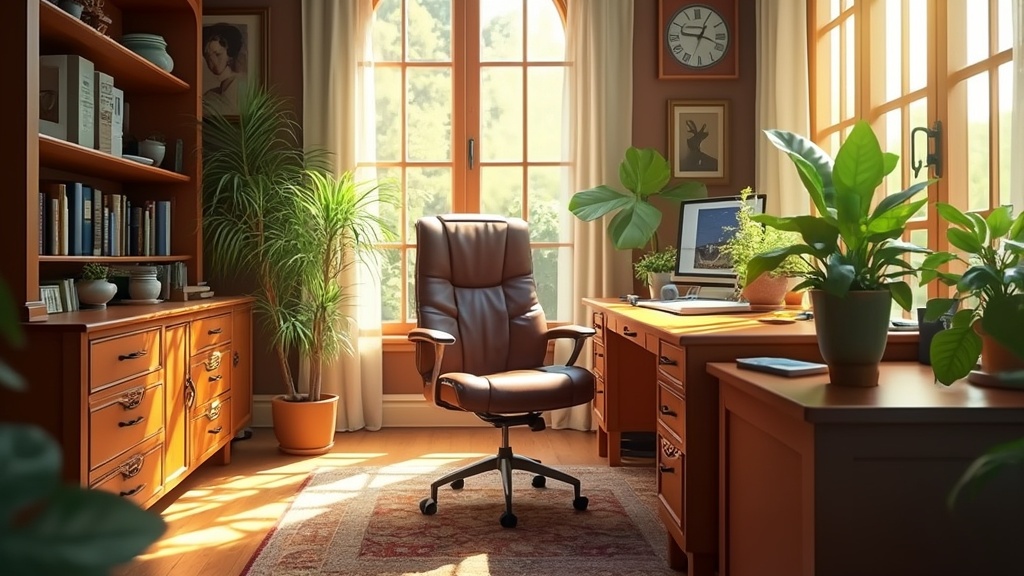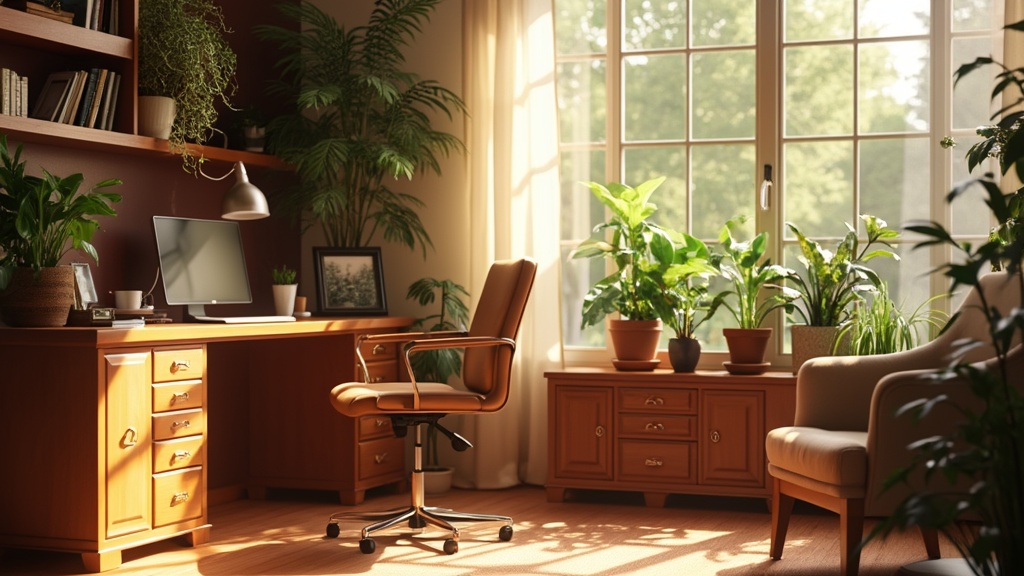Maintaining wood furniture is essential for preserving its beauty and enhancing longevity. Regular polishing not only enhances aesthetics but also provides protection against scratches and wear.
Employing effective polishing techniques, such as using soft cloths in a circular motion, ensures that wood polish is applied evenly.
When considering various wood types, tailored methods are paramount, as hardwoods may demand specific care compared to softwoods.
Establishing a polishing schedule can prevent buildup and sustain a desirable shine. Always make sure that clean surfaces are attended to before polishing to avoid embedding dust or dirt, which can damage the wood grain.
Click here to learn more about: how to polish wood
Choosing The Right Wood Care Products
Selection of products plays a significant role in both the longevity and appearance of your wood furniture.
Various factors influence wood care choices:
- Natural Ingredients: Options like beeswax and olive oil provide eco-friendly benefits.
- Synthetic Options: Acrylic-based polishes offer enhanced durability.
- Label Reading: Awareness of harmful chemicals is essential, as some products can compromise health and furniture integrity.
For optimal wood surface protection, always opt for cleaners that are free from toxic elements. Knowing the differences in finish types and their specific requirements helps in maintaining the wood aesthetics over time. Proper shine restoration and surface cleaning ensures effectiveness without causing damage. Ultimately, informed choices regarding wood cleaning products will lead to better furniture care outcomes.

What Are Effective Polishing Techniques
Achieving a radiant finish on your furniture requires proper polishing techniques, tailored to the specific wood types being treated. Different woods demand distinct approaches to maximize wood longevity and enhance their natural aesthetics.
For softwoods like pine, utilizing a soft, lint-free cloth ensures no scratches occur during the process.
Conversely, hardwoods such as oak benefit from microfiber cloths, which provide a more polished appearance.
Testing polish on a small area first is a recommended method for successful polishing techniques.
This preliminary step helps assess the polish’s compatibility and prevents any adverse reactions, assuring that the final results align with your aesthetic expectations.
How To Clean Wood Before Polishing
Establishing a thorough cleaning process serves as the foundation for maintaining beautiful wood furniture. Utilizing a pH-balanced cleaner is essential to avoid compromising the protective finish of your surfaces.
By integrating appropriate wood cleaning products, dust and grime can be effectively managed, ensuring that nothing interferes with the upcoming polishing process.
Effective drying techniques significantly contribute to preventing water marks. A soft cloth can absorb moisture efficiently, minimizing the risk of streaks.
Air drying in a controlled environment plays an important role in managing humidity levels, further creating an ideal canvas for polishing.
| Wood Type | Recommended Cloth | Cleaning Product | Drying Technique |
|---|---|---|---|
| Softwoods (e. g. , Pine) | Soft, lint-free cloth | pH-balanced cleaner | Soft cloth for moisture absorption |
| Hardwoods (e. g. , Oak) | Microfiber cloth | Appropriate wood cleaning products | Air drying in a controlled environment |
Best DIY Polish For Wood Furniture
Crafting a DIY polish for wood furniture can enhance both its appearance and longevity. Utilizing natural ingredients commonly found in kitchens, such as olive oil and vinegar, fosters effective wood care without introducing harmful chemicals.
For instance, olive oil nourishes the wood while providing shine restoration, whereas vinegar acts as a cleaner, adept at removing residues without inflicting damage.
To create your own polish, combine 1 cup of olive oil with 1/2 cup of vinegar inside a spray bottle.
Shake the mixture well to ensure blending, then apply it using a soft cloth in a circular motion for a stunning finish.
This simple recipe not only boosts the aesthetics of your furniture but also supports its overall longevity.
Understanding Different Finish Types
The choice of finish for wood furniture plays a crucial role in both protection and visual appeal. Different finish types offer unique advantages, directly influencing wood longevity and maintenance needs.
Oil Finishes
Oil finishes are favored for their ease of application and capacity to enhance the wood’s natural beauty.
They necessitate regular upkeep to maintain their protective qualities.
Varnish
Varnish provides impressive durability and resistance to scratches, making it an ideal choice for high-traffic furniture. Customers should consider that varnish may yellow over time, potentially altering the wood’s appearance.
Lacquer Finishes
Lacquer finishes dry rapidly and create a hard surface, offering effective wood surface protection.
Despite their benefits, achieving an even application can be challenging without prior experience.
Shellac
Shellac is a non-toxic option that is easy to repair and can be beneficial for certain wood types.
Its susceptibility to heat and moisture makes it less suitable for all applications.
Effectively matching finishes to specific wood types is essential, ensuring maximum protection and visual appeal.
Consideration of how different finishes interact with various woods can significantly enhance the furniture’s aesthetics and durability.
| Finish Type | Advantages | Considerations |
|---|---|---|
| Oil Finishes | Enhances natural beauty, easy application | Requires regular upkeep |
| Varnish | Durable, scratch-resistant | May yellow over time |
| Lacquer Finishes | Dries quickly, hard surface protection | Challenging to apply evenly |
| Shellac | Non-toxic, easy to repair | Susceptible to heat and moisture |
How To Restore Shine With Natural Ingredients
Reviving your wood furniture can effectively utilize eco-friendly methods without harsh chemicals. Common household ingredients exist that not only enhance shine but also are gentle on the environment.
Olive oil serves as a natural moisturizer and significantly promotes wood grain enhancement when applied correctly.
Vinegar effortlessly cuts through grease and grime, making it an excellent option for surface cleaning.
- Olive Oil: Acts as a natural moisturizer and shiner.
- Vinegar: Effectively cuts through grease and grime.
- Beeswax: Provides a protective layer while enhancing shine.
- Essential Oils: Imbues fragrance and adds conditioning properties.
- Soap Nuts: Represents an eco-friendly cleaning alternative.
To maintain the aesthetic of wood, developing a routine is essential: perform weekly furniture dusting using soft cloths to eliminate particles, engage in monthly cleaning with an equal vinegar-water mixture, and apply olive oil mixed with lemon juice quarterly for a shine boost.
Tips For Maintaining Wood Longevity
Maintaining the longevity of your wood furniture necessitates adjusting care routines according to seasonal variations. Winter demands increased humidity control to prevent cracking in wood, while summer requires keeping furniture out of direct sunlight to avoid fading. Conducting regular inspections helps identify and address minor scratches early, preventing them from becoming significant issues.
- Winter: Increase humidity in your home to prevent cracking.
- Summer: Keep furniture away from direct sunlight to avoid fading.
- Spring: Perform deep cleaning and inspect for signs of wear.
- Fall: Treat wood with a protective finish before the cold months.
Utilizing coasters is effective in preventing water marks from beverages, and positioning furniture away from heat sources significantly reduces the risk of damage.
A consistent polishing schedule combined with effective preventative measures considerably enhances wood longevity, ensuring its lasting beauty.
Wood Furniture Care
- Using natural ingredients like olive oil and vinegar can reduce the use of harmful chemicals in home care.
- Regular maintenance can extend the life of wood furniture by preventing damage from environmental factors.
- Seasonal adjustments in care routines help address specific risks associated with temperature and humidity changes.
- Coasters and protective finishes can significantly reduce wear and tear on wood surfaces.
Common Polishing Mistakes To Avoid
Effective polishing techniques play a significant role in the maintenance and visual appeal of your furniture. Many individuals encounter common polishing mistakes that can result in permanent damage or less than satisfactory outcomes.
Below are the primary errors to avoid, along with corrective actions for better results:.
Overusing Polish
Excessive polish can create a sticky residue, attracting dust and dirt. To prevent this, use only a few drops of wood polish on a soft cloth, ensuring even application across surfaces.
This practice allows for optimal shine restoration without build-up.
Using the Wrong Type of Polish
Not all wood finishes work harmoniously with every type of polish. Verify that the chosen wood cleaning products are compatible with your specific finish type to avoid altering your wood’s appearance or causing damage.
Failing to Clean Before Polishing
Dust and debris can cause scratches during the polishing process. Always clean surfaces before applying polish by wiping them with a damp cloth, ensuring clean surfaces enhance both aesthetics and longevity.
Polishing in the Wrong Direction
Polishing against the wood grain can damage the finish. Always follow the direction of the wood grain when applying polish, as this technique enhances wood grain visibility and prevents damage.
Skipping Regular Maintenance
Infrequent polishing can lead to the accumulation of grime and dirt. Set a polishing schedule every 3-6 months to ensure consistent wood care, promoting both wood longevity and appearance.
Using an Abrasive Cloth
Some materials can scratch and ruin finishes during polishing. Opt for soft, nonabrasive materials such as microfiber cloths to avoid damage and achieve the best polishing results.
By identifying and correcting these common polishing mistakes, you can significantly enhance the aesthetics and longevity of your wood furniture.
Implementing these furniture care tips will lead to a successful polishing routine that maintains shine enhancement and surface protection.
Polishing Furniture
- Using excessive polish can lead to a buildup that attracts more dust, requiring more frequent cleaning.
- Different wood finishes may react poorly to incompatible polishing products, possibly resulting in discoloration or damage.
- Regular cleaning before polishing helps prevent scratches and enhances the overall appearance of the wood.
- Polishing in the direction of the wood grain not only protects the finish but also highlights the natural beauty of the wood.
DIY Wood Polishing Tips For Shine
Best Wood Polish For Furniture Care


